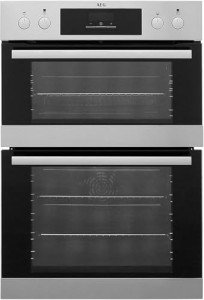The Benefits and Design Considerations of a Kitchen with a Built-In Oven
In modern kitchen style, built-in ovens have actually become a popular feature, providing both performance and aesthetic appeals that cater to modern-day way of lives. This post explores the advantages of incorporating a built-in oven into the kitchen space and highlights necessary design considerations to ensure a cohesive and practical kitchen environment.
Understanding Built-In Ovens
Built-in ovens are created to be seamlessly integrated into kitchen cabinetry, which distinguishes them from standard freestanding ovens. These appliances can be found in numerous setups, consisting of single-wall ovens, double-wall ovens, and even microwave ovens that share the very same integrated cabinet area.
Common Types of Built-In Ovens
| Type | Description | Suitable Use |
|---|---|---|
| Single Wall Oven | A standard oven with one compartment for baking and roasting. | Little kitchens or everyday baking. |
| Double Wall Oven | 2 different oven compartments permitting for simultaneous cooking. | Large households or regular bakers. |
| Mix Oven | A microwave and conventional oven in one unit. | Quick meals and versatile cooking alternatives. |
| Steam Oven | An oven created particularly for steam cooking. | Health-focused cooking and intricate recipes. |
Advantages of Built-In Ovens
The appeal of built-in ovens can be associated to a number of crucial benefits, including:
1. Space Efficiency
Built-in ovens are developed to fit within existing cabinets, freeing up important floor space. This function is especially advantageous in smaller sized kitchens, where every square foot counts.
2. Structured Appearance
The smooth combination of a built-in oven produces a refined appearance in the kitchen. Offered in various finishes, built-in ovens can match or match cabinets, providing a modern and unified design visual.
3. Improved Functionality
Built-in ovens often offer sophisticated functions, such as smart technology, numerous cooking modes, and even self-cleaning choices. This can enhance cooking experiences and improve the effectiveness of meal preparation.
4. Improved Accessibility
With correct setup of a built-in oven, users can increase accessibility, avoiding the requirement to flex over to reach a lower oven compartment. Eye-level cooking appliances permit cooks to monitor their dishes quickly and decrease the danger of burns from flexing down to check on a baking item.
5. Energy Efficiency
Numerous contemporary built-in ovens utilize advanced cooking innovation that can lead to lower energy intake. Functions like convection cooking can minimize cooking times while making sure even heating, eventually conserving energy.
Style Considerations for a Kitchen with Built-In Ovens
While built-in ovens offer many benefits, cautious consideration in the design phase is necessary to maximize their benefits and integrate them successfully into the kitchen layout. Here are some essential elements to consider:
1. Cabinet Configuration
When preparing for a built-in oven, homeowners should thoroughly think about cabinet layouts and setups. Double oven & hobs electric built in is critical for appropriate operation. It's important to leave enough area for airflow, which can vary depending upon the oven model.
2. Height Preference
The setup height of the oven should be determined based on the primary users. A built-in oven situated at eye level can make it easier to use, particularly for those who often cook.
3. Complementary Appliances
In a kitchen setting, built-in ovens frequently match other built-in appliances such as microwave and warming drawers. Choosing appliances that work well together can further simplify the kitchen's style.
4. Aesthetic Choices
Selecting finishes and colors that balance with the total kitchen design is vital. Built-in ovens are offered in numerous alternatives, including stainless steel, black, and even customized cabinet completes that can vanish flawlessly into the kitchen cabinetry.
5. Budget Considerations
Built-in ovens can range significantly in rate, from budget-friendly choices to high-end models packed with functions. It's important to set a realistic budget that enables the desired requirements without jeopardizing the total kitchen remodelling.
Frequently asked questions
1. What is the difference between a built-in oven and a freestanding oven?
Built-in ovens are integrated into cabinetry and supply a smooth look, while freestanding ovens are standalone units that can be moved quickly.
2. Do built-in ovens need expert installation?
Yes, built-in ovens typically require professional installation due to their integration with cabinets and electrical requirements.
3. Are built-in ovens more expensive than conventional ovens?
In general, built-in ovens can be more costly due to their setup process and advanced functions, but there are many choices readily available to fit varying spending plans.
4. How do I keep a built-in oven?
Regular cleansing and upkeep, such as using the self-clean function, checking seals, and guaranteeing proper ventilation, are important for keeping a built-in oven.
5. Can built-in ovens be utilized in smaller sized cooking areas?
Yes, built-in ovens can be helpful in smaller sized kitchen areas because they optimize area efficiency and can be installed at eye level for benefit.
Incorporating a built-in oven into a kitchen design is an outstanding option for improving performance and aesthetic appeals. By considering the style ideas and advantages discussed in this post, house owners can create an unified kitchen space that caters to their cooking needs while looking trendy and elegant. Whether renovating an existing kitchen or creating a new one, built-in ovens provide a level of elegance and practicality that aligns seamlessly with modern culinary practices.

